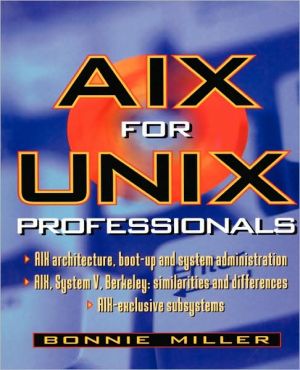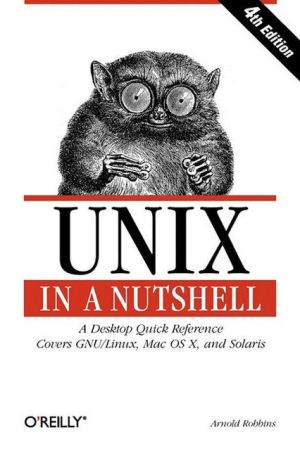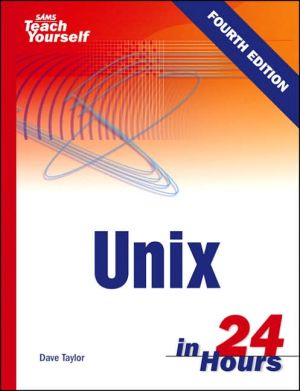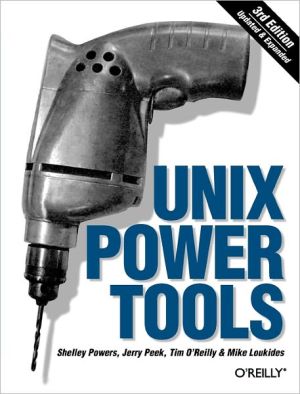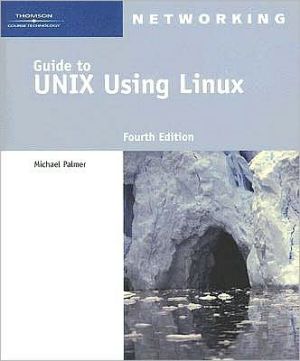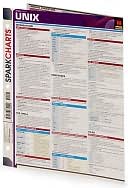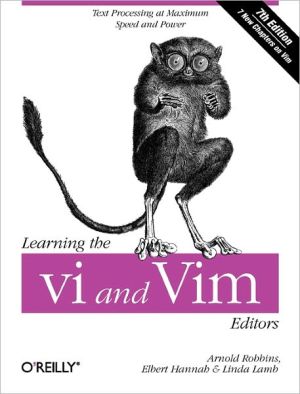AIX for UNIX Professionals
75724-5 \ \ AIX Architecture, boot-up and system administration\ AIX, System V, Berkeley: similarities and differences\ AIX-exclusive subsystems\ \ Fast AIX answers for experienced UNIX professionals!\ With the success of IBM's RS/6000 workstations, many professionals familiar with AT&T or Berkeley UNIX are being called upon to work with IBM's AIX. AIX for UNIX Professionals is the first complete tutorial and quick-reference designed to help UNIX professionals maximize their productivity...
Search in google:
75724-5 AIX Architecture, boot-up and system administration AIX, System V, Berkeley: similarities and differences AIX-exclusive subsystems Fast AIX answers for experienced UNIX professionals!With the success of IBM's RS/6000 workstations, many professionals familiar with AT&T or Berkeley UNIX are being called upon to work with IBM's AIX. AIX for UNIX Professionals is the first complete tutorial and quick-reference designed to help UNIX professionals maximize their productivity with AIX fast. It serves as a concise cross-reference to features of "standard" UNIX and AIX, helping professionals leverage their existing UNIX skills and make the most of unique AIX features that aren't available in other flavors of UNIX. Detailed coverage of AIX system initialization and troubleshooting AIX command and control Specific comparisons with AT&T UNIX System V and Berkeley UNIX AIX platform guidelines For all AIX system administrators, programmers, and workstation users Electronic Review of Computer Books - Elizabeth Zinkann Advanced Interactive Executive (AIX), IBM's version of UNIX, employs the Common Desktop Environment (CDE) interface and utilizes the distributed-computing model. Administrators familiar with BSD, HP-UX, Solaris, UNIX SVR4, and other UNIX systems are being recruited to work with AIX systems. Although the concepts essentially remain the same, the implementations, terminology, and procedures may differ (or at least use phrases that sound like they differ). To facilitate the transition from one system's vocabulary and processes to a separate set of syntax and techniques, AIX consultant Bonnie Miller has compiled an AIX/UNIX quick reference for the experienced UNIX professional. Throughout AIX for UNIX Professionals, she compares AIX and UNIX SVR4 routines as well as AIX and BSD methods. The first chapter, "System Initialization," introduces the significance of the LED readouts and the boot diagnostics tests and phases. The succeeding chapter explores the Object Data Manager (ODM) Subsystem, which stores device configuration data and details the ODM structure and location codes. The third chapter addresses the administration utility, System Management Interface Tool (SMIT) for Brains, followed by discussions of the Logical Volume Manager and the Journaled File System. The subsequent chapters identify AIX differences in procedures supporting serial and parallel devices, users and groups, the trusted computing base (TCB), problem determination, installation, networking, the queuing subsystem, and performance. The appendices contain built-in self-test (BIST) indicators, power-on self-test (POST) indicators, a prototype for RAMFS, bosinstlog, and the index. The coverage includes managing devices, installing software, performance, and networking issues. Miller explains where and when a subsystem or program must be installed and what links must be established before it can perform as expected. From a UNIX administrator's viewpoint, Miller's approach is excellent and precise. Her expertise in AIX, BSD, and UNIX SVR4 reflects experience and proficiency. The author created a quick-reference guide for intermediate to advanced professionals who need to transfer knowledge efficiently. Miller's book is noticeably free of padding -- I prefer a book with a foreword, preface, or introduction; Miller starts with chapter one, page one. (Although I don't usually acknowledge spelling errors, since this occupation seems to encourage them, three in the Table of Contents plus a missing parenthesis seemed to warrant a mention.) Nevertheless, the content is excellent. It is a superb resource for a specialized audience.
Ch. 1System Initialization1Ch. 2Object Data Manager9Ch. 3System Management Interface Tool (SMIT) for Brains23Ch. 4Logical Volume Manager33Ch. 5Journaled File System55Ch. 6Serial and Parallel Devices67Ch. 7Users and Group75Ch. 8Trusted Computing Base (TCB)95Ch. 9Problem Determination101Ch. 10Installation113Ch. 11Networking121Ch. 12The Queuing Subsystem139Ch. 13Performance155App. ABuilt-in Self-Test (BIST) Indicators165App. BPower-On Self-Test (POST) Indicators167App. CPrototype for RAMF173App. Dbosinstlog177Index181
\ Elizabeth ZinkannAdvanced Interactive Executive (AIX), IBM's version of UNIX, employs the Common Desktop Environment (CDE) interface and utilizes the distributed-computing model. Administrators familiar with BSD, HP-UX, Solaris, UNIX SVR4, and other UNIX systems are being recruited to work with AIX systems. Although the concepts essentially remain the same, the implementations, terminology, and procedures may differ (or at least use phrases that sound like they differ). To facilitate the transition from one system's vocabulary and processes to a separate set of syntax and techniques, AIX consultant Bonnie Miller has compiled an AIX/UNIX quick reference for the experienced UNIX professional. Throughout AIX for UNIX Professionals, she compares AIX and UNIX SVR4 routines as well as AIX and BSD methods.\ The first chapter, "System Initialization," introduces the significance of the LED readouts and the boot diagnostics tests and phases. The succeeding chapter explores the Object Data Manager (ODM) Subsystem, which stores device configuration data and details the ODM structure and location codes. The third chapter addresses the administration utility, System Management Interface Tool (SMIT) for Brains, followed by discussions of the Logical Volume Manager and the Journaled File System. The subsequent chapters identify AIX differences in procedures supporting serial and parallel devices, users and groups, the trusted computing base (TCB), problem determination, installation, networking, the queuing subsystem, and performance. The appendices contain built-in self-test (BIST) indicators, power-on self-test (POST) indicators, a prototype for RAMFS, bosinstlog, and the index. The coverage includes managing devices, installing software, performance, and networking issues. Miller explains where and when a subsystem or program must be installed and what links must be established before it can perform as expected.\ From a UNIX administrator's viewpoint, Miller's approach is excellent and precise. Her expertise in AIX, BSD, and UNIX SVR4 reflects experience and proficiency. The author created a quick-reference guide for intermediate to advanced professionals who need to transfer knowledge efficiently. Miller's book is noticeably free of padding -- I prefer a book with a foreword, preface, or introduction; Miller starts with chapter one, page one. (Although I don't usually acknowledge spelling errors, since this occupation seems to encourage them, three in the Table of Contents plus a missing parenthesis seemed to warrant a mention.) Nevertheless, the content is excellent. It is a superb resource for a specialized audience.\ — Electronic Review of Computer Books\ \ \ \ \ \ BooknewsHelps UNIX administrators learn both analogous and unique features of IBM's AIX system. The author discusses a high-level view of the system environment, describes each system feature, and demonstrates specific solutions to common problems UNIX users face in migrating to AIX. Annotation c. by Book News, Inc., Portland, Or.\ \
